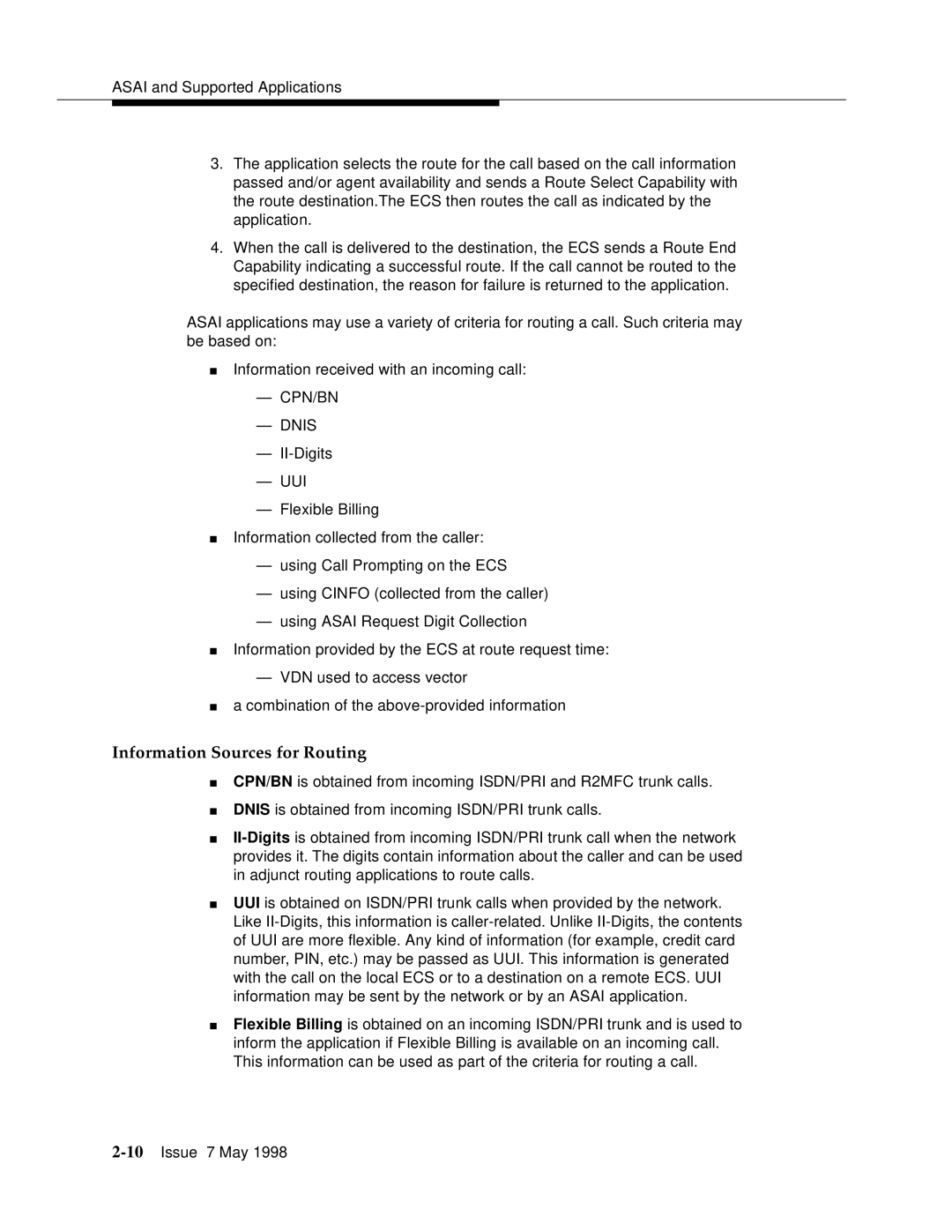ASAI and Supported Applications
3.The application selects the route for the call based on the call information passed and/or agent availability and sends a Route Select Capability with the route destination.The ECS then routes the call as indicated by the application.
4.When the call is delivered to the destination, the ECS sends a Route End Capability indicating a successful route. If the call cannot be routed to the specified destination, the reason for failure is returned to the application.
ASAI applications may use a variety of criteria for routing a call. Such criteria may be based on:
■Information received with an incoming call:
—CPN/BN
—DNIS
—
—UUI
—Flexible Billing
■Information collected from the caller:
—using Call Prompting on the ECS
—using CINFO (collected from the caller)
—using ASAI Request Digit Collection
■Information provided by the ECS at route request time:
—VDN used to access vector
■a combination of the
Information Sources for Routing
■CPN/BN is obtained from incoming ISDN/PRI and R2MFC trunk calls.
■DNIS is obtained from incoming ISDN/PRI trunk calls.
■
■UUI is obtained on ISDN/PRI trunk calls when provided by the network. Like
■Flexible Billing is obtained on an incoming ISDN/PRI trunk and is used to inform the application if Flexible Billing is available on an incoming call. This information can be used as part of the criteria for routing a call.
